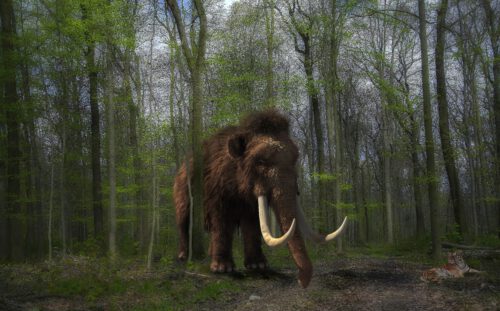The research team was able to assemble and decipher an entire segment of the genetic sequence. First achievement of its kind regarding extinct animals from the Pleistocene period* The study provided some new insights into the evolution of elephants

A team of scientists from Germany who managed to extract DNA samples from the bones of an ancient frozen mammoth found that the extinct hairy animal was relatively close to the Asian elephant and in any case, very far from the African elephant. The study, published Sunday in the journal Nature, was carried out by researchers at the Max Planck Institute for Evolutionary Anthropology in Leipzig, Germany.
Mammoths were giant elephant-like animals that thrived during the Ice Age. They became extinct about XNUMX years ago, but their bones and other remains have been found in Karach-Ad regions in Siberia.
The team of scientists led by Michael Hofreiter and Svante Fabo extracted a DNA sample from a mammoth bone weighing 200 milligrams.
Their findings led them to conclude that the African elephant separated from its Asian cousin 6 million years ago, while the joint evolution of the Asian elephant and the mammoth continued until 440 thousand years ago.
The scientists identified 5,000 DNA "letters", which together make up the genetic code of the mammoth mitochondria - the part of the cell that produces energy.
The BBC reported that the study, published in the online version of the prestigious scientific journal Nature, provided some new insights into the elephant family tree and their evolution. First and foremost, he found that the mammoth was closer to the Asian elephant than to the African. The three groups all evolved from a common ancestor about 6 million years ago, with the Asian elephant and mammoths splitting off about half a million years ago.
"We have finally solved the puzzle of mammoth race history, which has been controversial for the past decade," said lead researcher Professor Michael Hofreiter of the Institute for Evolutionary Anthropology in Leipzig, Germany. Mammoths lived in Africa, Asia and North America from 1.6 million years ago until 10,000 years ago, during the Pleistocene period. The woolly mammoth is covered with shaggy hair, which was adapted to the extreme conditions of the ice ages.
from jumpstory from jumpstory from jumpstory
A new method for examining ancient DNA
Walla News reports that DNA segments of several other extinct mammals, preserved in frozen ground, have already been analyzed before - but never in such great detail. "This is the longest piece of DNA that has been deciphered to date from any Pleistocene race," said Prof. Hofreiter.
The team of researchers, who came from Germany, Great Britain and the United States, extracted and analyzed the genetic material using a new method, which also works with minute amounts of DNA sample from fossilized bones. 46 DNA segments were compared and arranged by the researchers, who succeeded in reconstructing the entire genetic sequence responsible for the assembly of the mitochondria. This sequence passes from mother to daughter with small but constant changes, thus opening a window to the past for researchers.
Dan Bradley, an ancient DNA expert at Trinity College in Dublin, Ireland, said the research was a "landmark". "Most projects examining ancient mitochondrial DNA have only discovered parts of the sequence," he added.
